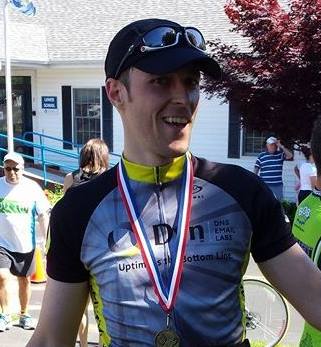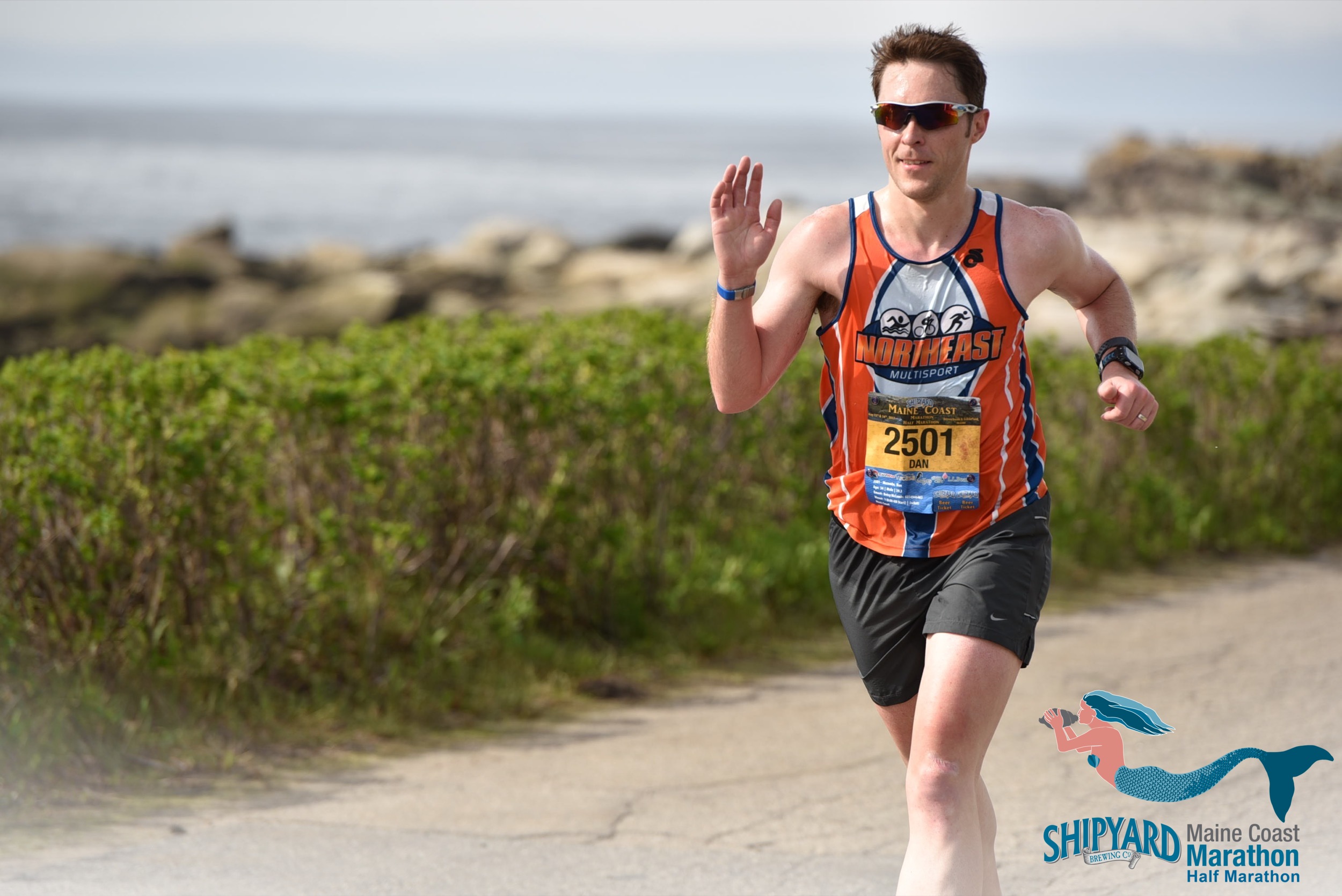
Last year I ran the Maine Coast Marathon for the first time, and really enjoyed it. So, given my plans for 2017, when registration opened up in October I signed up to use it as training towards IRONMAN Lake Placid.
Since I wasn't running Maine as a goal race with a particular time in mind, I decided I'd exercise my friend Dave Maxwell's mantra: "You are morally obligated to sign up for the longest distance offered.". That meant, signing up for the 39.3 challenge and running a half marathon the day before a full marathon for the first time for me.
The Plan
As the race got closer, maybe a month out, I started thinking about how I was going to approach it. It would be my 9th full marathon since my first in the fall of 2013. I'd never run a full marathon without really slowing down in the last miles, and certainly never negative split one. So, that was my plan: I'd go easy in the half marathon on Saturday, then go easy for the first 20 miles of the marathon on Sunday, and speed up for the last 10k aiming to finish strong and negative split if possible.
Weather Forecast and a Change of Plans
A week before a race is that time to keep peeking at the forecast, and if it's not what you'd like, hoping it changes over the days leading up. So when it looked like it might rain the weekend of the event, there was a lot of finger crossing, and hoping the storm would speed up or slow down to fall on a different day or even time of day.
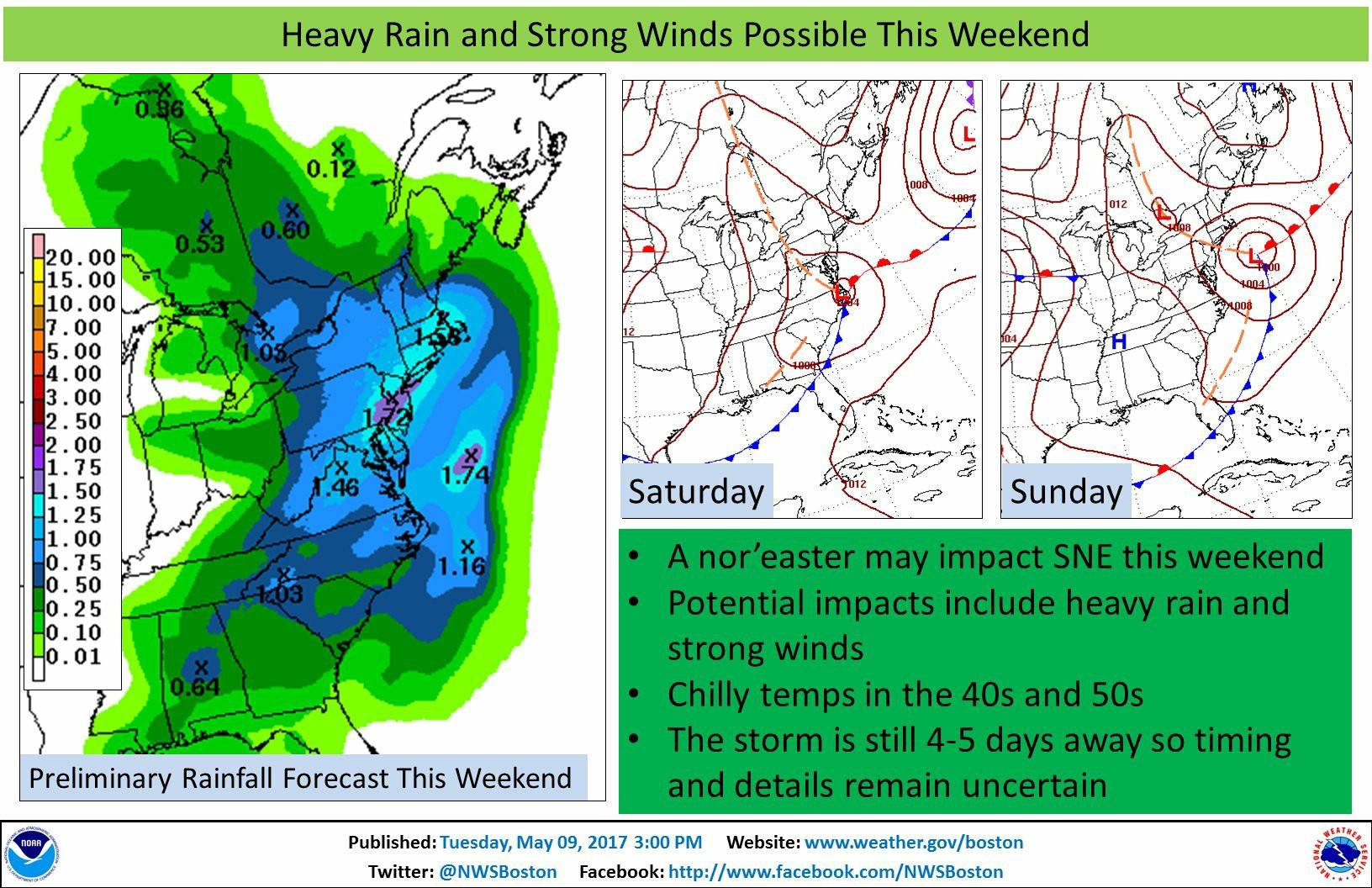
Unfortuately, the forecast only got worse - predicting a strong storm nicknamed a "nor'easter" that's a rotating storm with high winds and precipitation that can develop in New England. It looked like it would start Saturday night and bring heavy rains and strong winds - 25mph with gusts to 40mph - on Sunday.
Saturday, however, looked ideal for running. Low winds, clear, low humidity, and 45F. The marathon on Sunday looked like it was going to be a difficult run to get through at all, with a lot of uncontrollable factors. That prompted a change of plans.
I decided to take advantage of the day and run harder in the half marathon on Saturday, not all out, but hard, and see how things went on Sunday with a plan of going easy until the last few miles if I could.
Saturday's Half Marathon
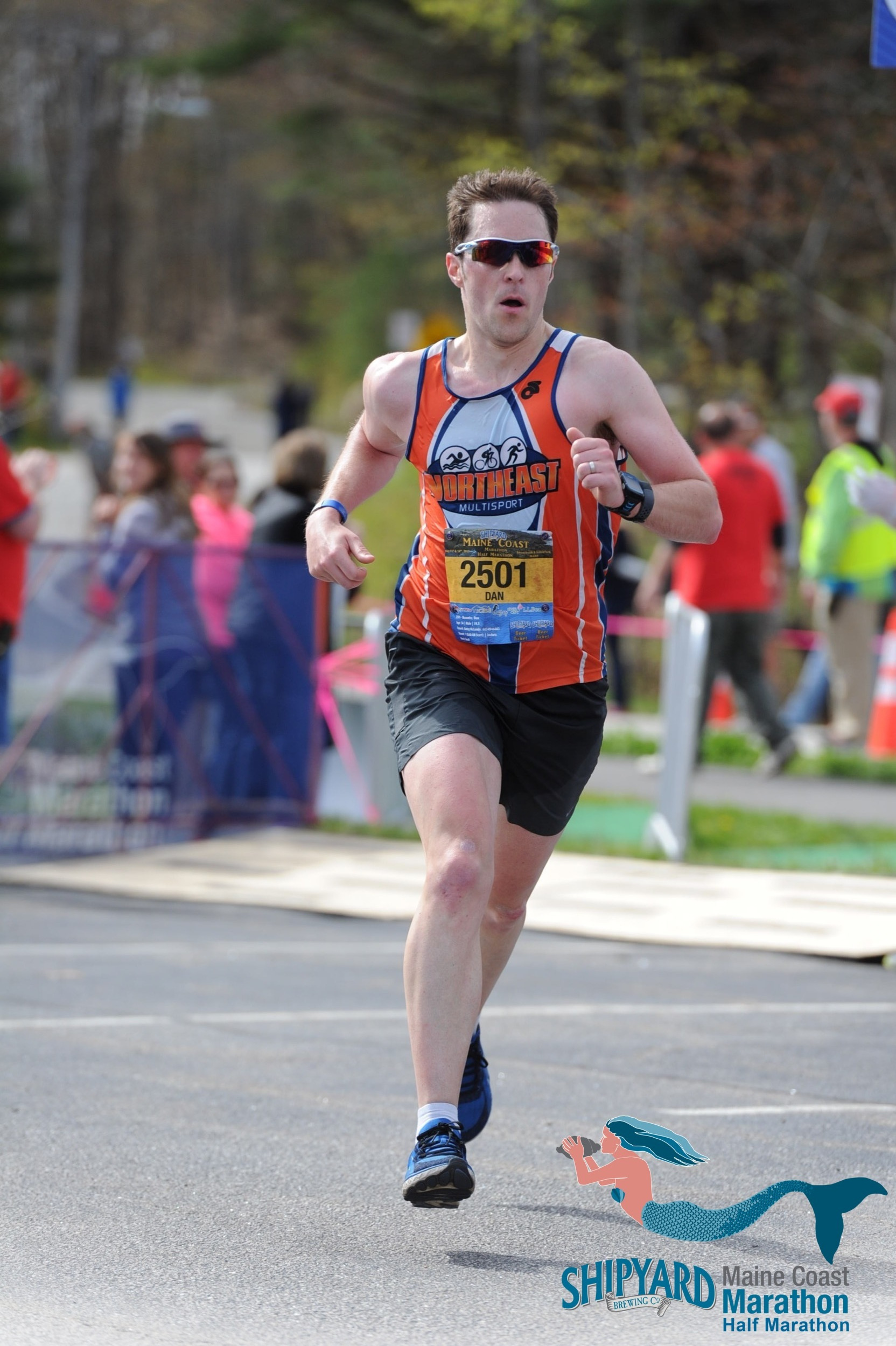
I hadn't run the half marathon last year, so the course was new to me. The half and the full both share a finish line on the UNE campus however, and due to construction on the campus this year the finish line had to be temporarily moved. This meant that both the courses were a 1/2 mile shorter than normal, so they needed to make this up somehow. The half marathon had an out-and-back section already, so the turn around point was simply moved 1/4 mile down the road to make up the distance.
I decided to aim to run not fast enough to try to PR, but I'd aim to break 1:30 as a benchmark. I used the excellent Race Screen Garmin ConnectIQ data field to set my race distance and goal, giving a quick look (by color, black or white) of whether I was on track, along with a finish time estimate and distance adjustment at mile markers.
The half marathon course is a little narrow for the first couple of miles, running in a coned-off area along a busy road, so the race not only breaks up the field by expected pace, they actually send the runners off in waves based on predicted pace with 2 minute gaps between them to prevent congestion. This seemed to work pretty well, there was the usual push at the start with some folks going out too hard, but settled and stretched out before long.
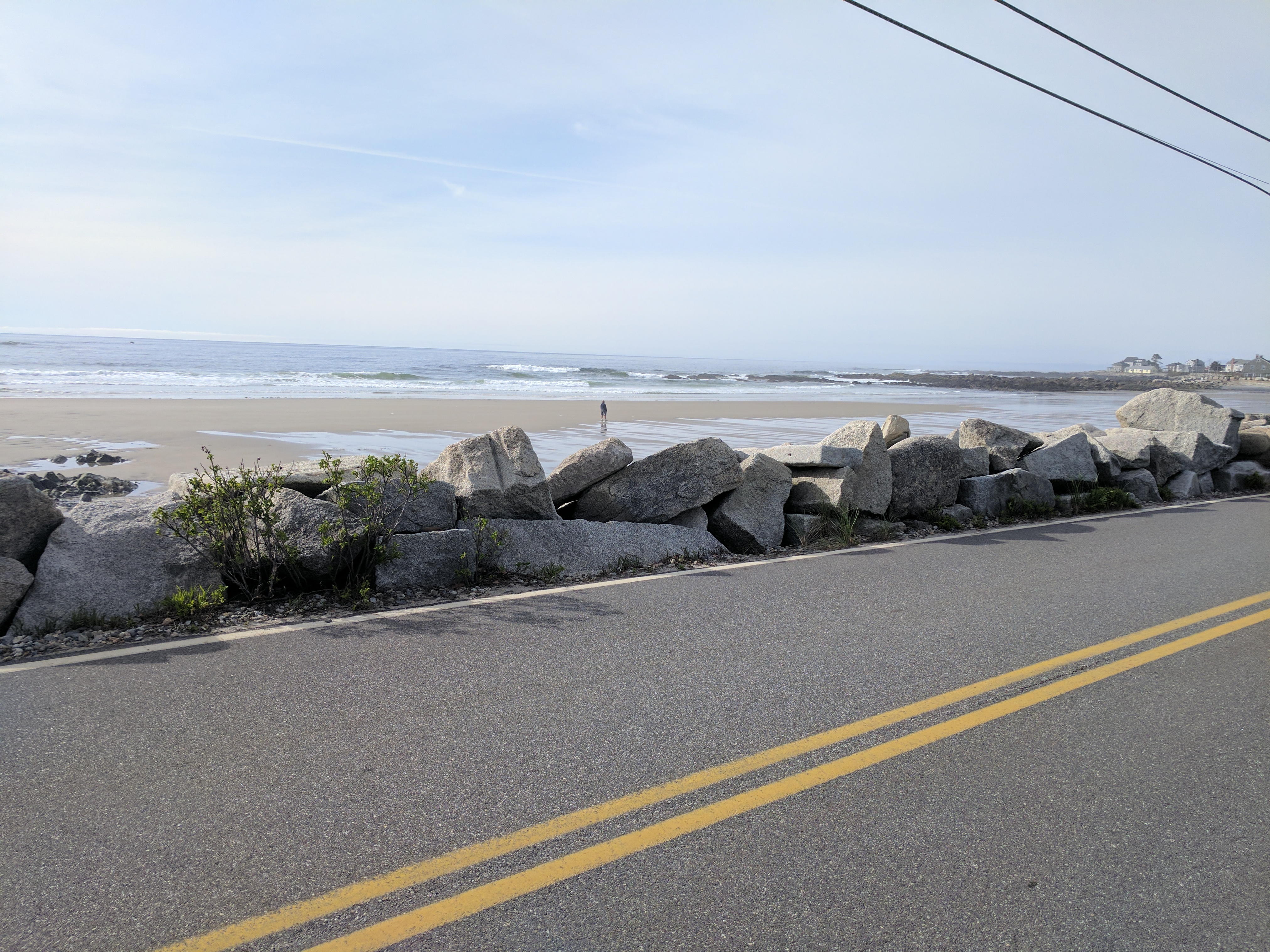
I wore my Flipbelt as I usually do - both to hold a gel and my phone so that I could use my Garmin watch's Livetrack feature for my wife and son to keep an eye on me. Going a little conservatively meant I also felt comfortable enough to take out my phone a few times to get some photos of the beautiful coast line of the race.
Things went pretty smoothly, and I slowly passed runners over the course of the race to finish 21st overall out of 1370 in 1:28:17. That put me in 4th out of the 32 men doing the 39.3 challenge.
After the race I did a bit of recon for the next day. The finish line was right near the campus athletic center and was allowing runners to use showers - that would be pretty important after 3+ hours in the rain at 40F temperatures. So, I checked out where that was, and the Mobile Locker service at the finish line. Their truck would be at the start line the next day, and for $10 I could stash a bag with dry clothes, shoes, and the rain jacket I wore to the start line to pick up at the finish line after the race. Sold.
Recovery
The challenge to running harder on Saturday was recovering well that night for the marathon on Sunday, and I think it went pretty well. I used a muscle roller and stretched twice that evening, wore recovery compression socks until I went to bed, drank plenty of fluids including Gatorade G2, and had some protein and carbohydrates every couple of hours. I also went to bed fairly early, getting about 8.5 hours of sleep even with getting up at 4:30am to get to the marathon in time.
Sunday's Marathon
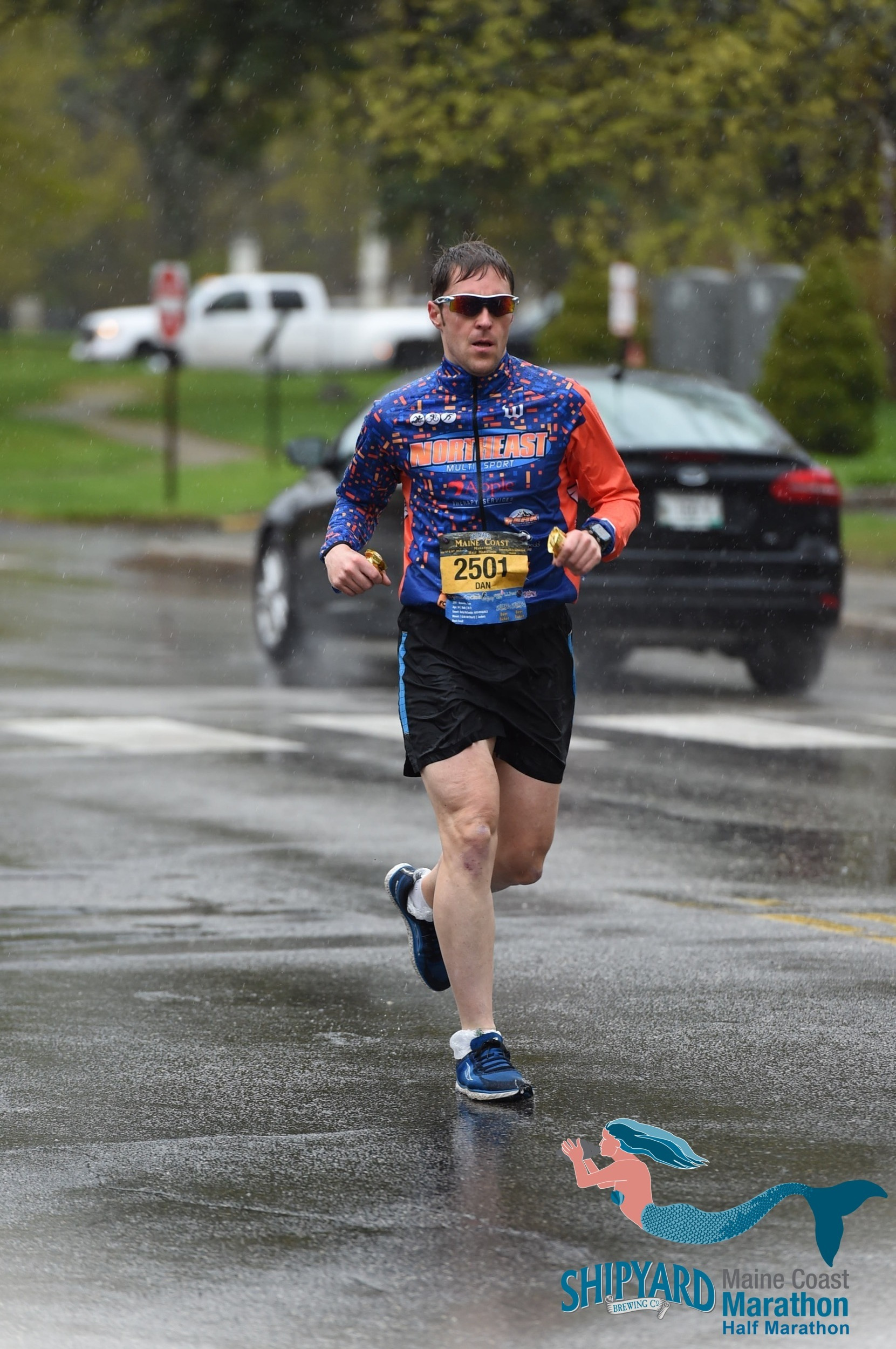
Convincing myself to go Sunday morning wasn't easy. It was 4:30am, I had a little over an hour drive ahead of me and it was raining pretty heavily. I was pretty uncertain of which shoes I was going to wear - I had planned to wear the same Altra Escalante shoes I had worn the day before and have really loved, but not only had I not worn them for longer than 20 miles yet, they also certainly weren't water proof.
Luckily my triathlon club, Northeast Multisport, had recently gotten new kits from Wattie Ink and that included picking up some extra lightweight jackets. While not waterproof, they're water resistent and not too warm, so I decided to use one of those for the marathon. It was great - I didn't overheat in it, and it was an hour of pretty steady rain before I felt like it had soaked through - though I'm not even sure if it really did, or if it was just me sweating inside. In either case, it didn't get soaked and heavy and that was a great bonus.
I was pretty liberal with Body Glide anywhere I tend to chafe, including putting it on my toes and the balls of my feet which I normally don't. Having run a couple of marathons in the rain and ended up with blisters, I wanted to avoid them in any way I could. I also tried the trick of using a couple of plastic bags from the produce section of the grocery store and put those over my socks inside my shoes. I'm not sure they really helped, but probably didn't hurt.
The race was able to get the Kennebunk High School at the start line to allow runners inside before the start of the race to stay dry, which was pretty helpful. I went out to the starting line about 2 minutes before the start to minimize how long I was standing in the rain not moving, and the race organizers did a good job of getting things started right on time.
I went out conservatively and planned to just run by heart rate keeping around 150bpm. I again used the Race Screen data field on my watch, but this time just for the time estimate rather than for pacing.
The first mile of the race the road is closed to traffic, and then the next 7.5 miles have one lane closed which is great. This mostly went well, until around 6 miles when a car turned at an intersection ahead into the one lane that was open, but going the wrong way. The police officers were yelling at the driver to stop, to no avail, so I moved over towards that side of the road and waved my warms at them, yelling to stop, and making any kind of hand motions I could to try to get their attention - meanwhile with a police officer running behind the car trying to stop them. The driver ignored me, so I moved back out of their way, and the police officer was yelling to another up the road to pull them over - an interesting start to the day.
One mistake I made was that I didn't bring my Flipbelt because I didn't intend to bring my phone in the rain, without thinking of where I was going to store some gels for food. I ended up just holding 2 in each hand until I had eaten them all around 2.75 hours later. Whoops, not ideal, but minor in the grand scheme of things that could go wrong.
The volunteers, especially those out at aid stations, were great. Not only were they out for hours in windy rain helping us, many of them were having a pretty fun time doing it. One of the earlier aid stations was staffed by 6 or 7 folks all wearing grass skirts, horned viking helmets, and one was playing a ukulele as I went by. Another I went by later on had some music going for us, playing "stayin' alive, stayin' alive".
Just before mile 10, there was a runner that wasn't part of the race running towards us on the opposite side of the road. A pretty interesting day to choose to head out on a run, but you've gotta do what you've gotta do I suppose. As he got closer he said "Hey Dan! Go get 'em!" - it was Steve from Northeast Multisport - always good to see a familar friendly face, especially an unexpected one in lousy conditions.
Mile 12 is now somewhat infamous. Up until that point, my watch had been pretty dead on the mile markers for distance, and I was approaching a curve through an intersection with the 12 mile marker sign just ahead. My watch read 11.87 at this point.
There was a course marshall stationed in this intersection, and she was very clearly telling runners to "turn right, run to the head of the dead-end, and back". The race director had mentioned that they needed to add an out-and-back to the course somewhere to make up for the 1/2 mile they were losing at the finish, so maybe this was it?
Things seemed a bit strange, the dead end had no other race official, no sign, not even a cone to go around, to signal a turn around. By the time I reached the intersection again and passed the mile 12 sign, my watch was up to 12.5 miles. Did they not have time to relocate the mile signs after adding the out-and-back? Was the construction really that last minute?
Miles went by, and the mile markers continued to be a 1/2 mile off. Maybe they were going to adjust it just at the finish? Strange, but nothing I could do about it now.
Around mile 16.5 there was a voice behind me - "Hi, Dan!". It was my friend Taryn who I didn't know was running this race - nobody did - she was in stealth mode. She had ran her first marathon in the fall and hurt her calf, forcing her to DNF, so she wanted to do this one incognito.
She felt good and had made it further than in the fall, but thought she was starting to fade. It was too bad too, as I was running around her goal pace and would have been good to pace off of. We discussed the extra half mile, hoping it would even out at the end. We started to separate a mile later or so.
Then came mile 20... an out-and-back turn around you say? Making up for the 1/2 mile lost at the finish you say? Deja vu. This time the road was right on the coast, muddy, and with several puddles of standing water stretching the width of the road that couldn't be avoided and were a few inches deep. This time, the end of the road had a sign with a U-turn arrow on it, and seemed more legit. Huh.
At this point I was pretty impressed with the shoes I was wearing. The foam is a new type of foam that's as comfortable as traditional foam at a lower profile, and is more responsive. Also being less bulk and seemingly denser, it really didn't aborb water as much as other shoes I've had which was great - they didn't become wet, heavy weights on my feet. The one piece knit uppers on them are also pretty porous, and water seemed to drain out of them pretty easily. I didn't feel any sore spots on my feet, so far, so good!
Miles 22-24 were back out on the coast again, and the wind had really picked up. I was still running by heart rate at this point, but my pace had noticeably dipped for the same effort. I was on a familiar part of the course now recognizing the lead up to the finish of the half marathon. I was pretty eager for the turn inland to get some shelter from the wind.
At this point I had mostly given up on getting back that half mile from earlier in the race, and decided I'd aim to pick up the pace for the last mile starting around 25.7 on my watch. It was satisfying to be able to go from my 8:00 or so average pace to under 7 for the last mile at the end of a marathon. While I didn't negative split, I succeeded in not blowing up or "hitting the wall" for the first time in a full marathon, victory, especially in tough conditions.
Post Race
Things went perfectly according to plan after the race. A short walk from the finish line on my way to the athletic center was the Mobile Locker truck, I picked up my dry clothes and shoes, and headed for a warm shower. The showers were in a locker room, and I had put a padlock in my bag so I was even able to lock up my things while I showered. Perfect.
A warm shower and dry clothes made a world of difference, as I saw many other shivering runners when getting food afterwards. I didn't stay for long, and was much more comfortable to drive home at that point.
I finished 85th overall in the marathon in 3:33:06. Well, I ran a marathon in about 3:29, the extra 1/2 mile added the other 4 minutes. I moved up to 3rd overall in the 39.3 challenge - an unexpected podium!
Overall
Overall I had a fun time, even with the weather and course error, and was really satisfied with how well my change of plans worked out. I think running the half harder may have been better training towards IRONMAN Lake Placid anyway, being more tired for the marathon. My clothes, shoes, nutrition, and Body Glide all worked out really well. I didn't have any chafing problems, and not even a hint of a blister. The only minor mistake was not having my Flipbelt for the marathon.
The course error was made by a course marshall that was from a company the race had hired due to not having enough volunteers in the conditions, and although the race director had driven the course with the company and given them handouts with zoomed in maps of each intersection, something got miscommunicated. There were a handful of folks pretty upset as they were aiming to qualify for Boston and missed by a couple of minutes. I was pretty glad to not be running with that goal this time around. The BAA won't take adjusted times, so the race refunded those runners and gave them free entry to next year's event. It's hard to fault them for that, especially with how transparent they were about the whole thing.
We'll see what plans end up being next year, but I think another 39.3 challenge is in my future - and it'll be nice for them to be able to move the course finish back after the campus construction is finished next year.
